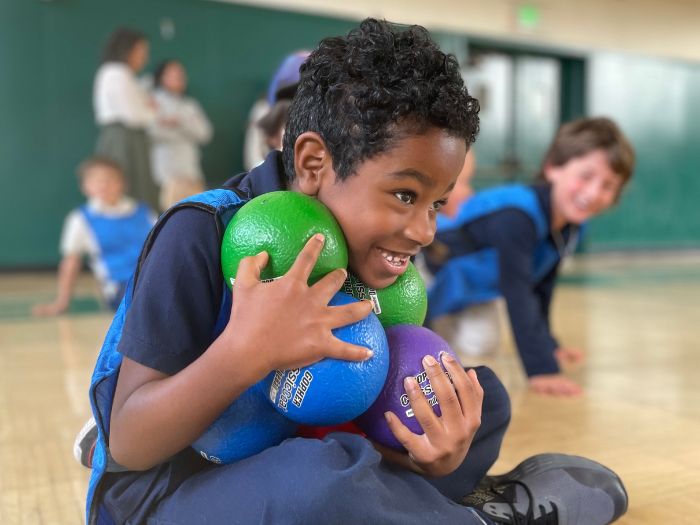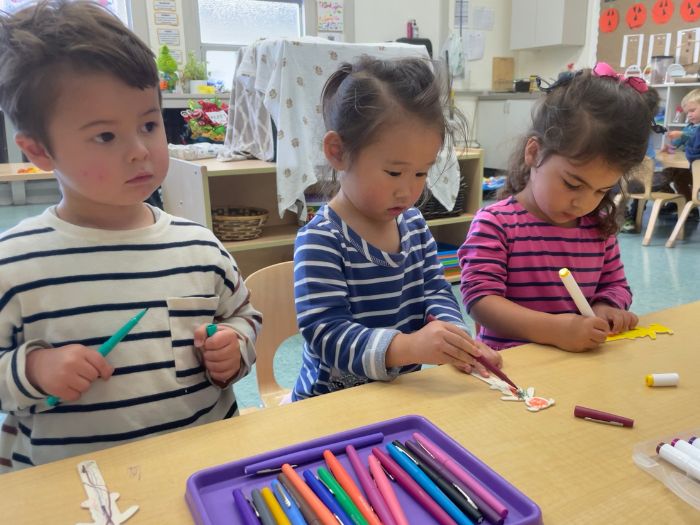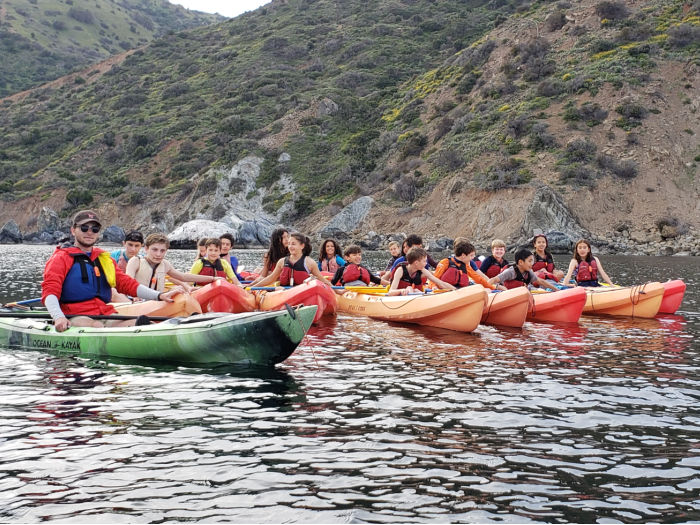Thanks to our partners at Escuela Bilingüe Internacional (EBI), a bilingual PK-8 International Baccalaureate (IB) Spanish-English immersion school in Oakland, for helping {510} Families develop a helpful reference for parents hoping to raise their children bilingual. From reasons why to how to start, we hope you find a lot of useful information.

Three Advantages of Raising a Bilingual Child
Many parents wonder whether learning a second language will impede their children’s academic development. Quite to the contrary, research tells us there are significant advantages to raising a bilingual or multilingual child. Three key advantages are linguistic, cognitive, and cultural development.
As children learn two or more languages, they have a better understanding of how languages work, which can improve reading and writing skills in both languages. Also, when children are exposed to more than one language, it can facilitate their learning of another language in the future. Furthermore, studies have also shown that students who are bilingual often score higher on standardized tests in math, reading and vocabulary.

Bilingualism has shown positive neurological impacts, such as improving working memory and the ability to follow instructions (¡increíble!). Bilingual children often develop stronger executive functions, such as problem-solving, multitasking, and focus, due to managing two languages. Research has also shown that they have more flexible thinking and are more able to adapt as they switch from one language to another.
There’s an additional benefit for children in multilingual environments. When home or school life happens in two languages, children aren’t just ‘learning’ a language; instead, they are learning ‘in’ a language, and these two things are very different.
When children learn in an immersive way — for example, by attending a bilingual school, having parents who speak in more than one language, or living abroad — their cultural awareness increases, creating a more nuanced appreciation of our global community. ¡excelente! Bilingualism therefore fosters appreciation for diverse cultures, increasing empathy and social awareness.
“As a child of Indian immigrants, I was exposed to several languages since birth and believe it has been helpful to my personal growth, confidence, and development. Additionally, we wanted the option to live abroad for a period of time, and comfort with a language was a gateway to that goal. As language appears to be much easier to grasp early on, we were committed to prioritizing bilingual education.” ~ EBI parent for preschool & middle school
How to Build Bilingual Habits for Every Family
Whether you’re able to begin speaking Spanish to your baby or Mandarin with your toddler, there are several entry points to the road toward bilingualism and it will look different in each family. When exposing children to language, the focus should be on intentionality. Whether a native speaker or not, there are a variety of resources available and small changes to be made to help introduce new cultures.
- Libraries. Our public libraries have children’s literature sections with books in a variety of languages. Whether one is searching for picture books or longer stories, there is a good selection of books, and often music and movies, that families can access.
- Music. Making simple switches like playing/singing children’s songs and lullabies in another language is also another great way to begin language exposure. Find a music class for toddlers in another language >
- Events & Celebrations. Searching for community events for children in the target language increases language exposure and may connect you with other families who are making the same efforts.
- EBI Spanish Storytime. EBI’s Community Programs are a wonderful way to engage with activities such as their monthly Cuenta Cuentos, Spanish storytime led by an EBI pre-kinder teachers. This event is held at EBI’s Alcatraz campus on the second Saturday of the month. Check the 510 Families calendar or the EBI events page to find appropriate events.
Bilingual Resources for Babies, Toddlers, and Preschoolers
- For just a taste of a second language, read some early picture books together or join a music class in Spanish or Mandarin.
- Did you know that you can switch the language on lots of cartoons? (We see a family in which English-speaking parents changed their kids’ cartoons on Netflix to Spanish.)
- To go a giant step deeper with a new language, immerse yourself by finding a caregiver or preschool in a second language. EBI starts its Primary Years Programme (PYP) as early as age 3 and, as mentioned above, hosts Spanish storytime for preschoolers. In pre-kinder, EBI educators communicate exclusively in Spanish with body language, drawings, and facial expressions to support non-native speakers. Learn more about the EBI pre-kinder program >
- Young children can also start enjoying the benefits of different foods and family travel. The East Bay has so many global restaurants our little kids love >
As children grow older, continue to find occasions for sharing in a second or third culture. To enhance language learning, there are loads of other options: summer camps, afterschool language classes, one-on-one tutoring (or italki), google translate, video games, cultural festivals, world music, and international cooking classes.
Bilingual Resources for School-aged Children
To build real fluency, older children, teens, and adults will want to seek out as immersive an environment as possible. Student exchange programs and international travel are amazing opportunities. Additionally, engaging with native speakers through language meetups, online platforms, or local communities can provide valuable practice. Reading books, watching films, and listening to podcasts in the target language further enhance understanding and cultural awareness.
Studies have also shown that learning a second language at any age has many linguistic, cognitive, and cultural benefits. To support this, EBI has an Accelerate Spanish Program (ASP) in Grades 1-8 to welcome students with limited to no prior Spanish experience.
EBI’s Accelerated Spanish Program
EBI offers a unique opportunity for students with little to no Spanish with their Accelerated Spanish Program (ASP). This program immerses Grades 1-8 students in a pathway to Spanish proficiency. Combining EBI’s bilingual community with the academically rigorous International Baccalaureate (IB) curriculum, ASP develops confident, bilingual communicators.

Program Highlights
- Accelerated Spanish Proficiency: ASP strengthens students’ Spanish skills in reading, writing, speaking, and listening through a customized curriculum, enabling success in both English and Spanish.
- Integrated IB Curriculum: Spanish learning is seamlessly blended with IB values and global perspectives, supported by bilingual resources and personalized instruction.
- Immersive Learning: Small groups, individualized support, and language-focused activities foster confidence and progress in a collaborative environment.Learn more about the Accelerates Spanish Program at EBI >While the young brain may be more pliable, it is never too late to start.
“We were so impressed by the entire staff’s dedication to get the Accelerated Spanish Program students up to speed with their immersion classmates. Henry is now fully integrated into the immersion classes with the entire grade. He is really good friends both with the students he started the ASP program with, and within the entire grade, which is a win all around.” Jennifer, current grade 8 parent.
Learn more about Escuela Bilingüe Internacional
EBI is the only school in the East Bay that is authorized to offer both the Primary Years Program (PYP) and the Middle Years Program (MYP) for the International Baccalaureate (IB) as part of a Spanish-English immersion program. The IB framework focuses on developing internationally-minded young people who are prepared to thrive in a diverse, changing world with character and empathy.

“We firmly believe it is never too late to start learning another language!” ~ Talia Romero, MA, Pre-K-1st Grade Principal at EBI
Plan your visit to EBI to see for yourself
Join EBI for one of its many opportunities to get to know the programs better. Sign up for an upcoming information event or tour. They look forward to meeting your family!
Share this:
- Click to share on Facebook (Opens in new window) Facebook
- Click to share on X (Opens in new window) X
- Click to share on Pinterest (Opens in new window) Pinterest
- More
- Click to email a link to a friend (Opens in new window) Email
- Click to share on Tumblr (Opens in new window) Tumblr
- Click to print (Opens in new window) Print
- Click to share on Reddit (Opens in new window) Reddit
- Click to share on Pocket (Opens in new window) Pocket
- Click to share on LinkedIn (Opens in new window) LinkedIn




